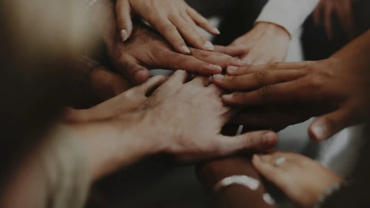In our new Human Trafficking Resource Center, cities and other public authorities can find readily accessible online toolkits to help them in their fight against this terrible crime
The scourge of human trafficking has seen an increase in the numbers of individuals at risk, stretching public resources and allowing more sophisticated criminal networks to contribute to a rise in this heinous crime, which carries a tragic impact on communities across the U.S. and internationally.
Indeed, in 2022 alone, there were an estimated 19,000 reports of child sex trafficking in the U.S. made to the National Center for Missing and Exploited Children, according to the group’s data.
What is needed to combat these realities is increased collaboration among municipal governments, civil society, the private sector, and community members.
To this end, Thomson Reuters is proud to take stewardship of the City of Houston’s world-class anti-trafficking toolkits and make them readily accessible online to cities and other public authorities. Through these step-by-step guides, municipal authorities can quickly mobilize anti-trafficking campaigns which may otherwise take years of planning, saving cities and towns money and other public resources.
Public awareness campaigns play a critical role in tackling human trafficking, and the City of Houston’s campaigns are recognized as models of best practice in this area. Under the leadership of Mayor Sylvester Turner, the Mayor’s Office of Human Trafficking and Domestic Violence documented its approach to creating anti-trafficking campaigns. Through these insights they developed a suite of tools and resources for local, national, and international organizations and agencies to launch anti-trafficking responses that can be readily contextualized to any community.
The new Thomson Reuters global Human Trafficking Resource Center will house the toolkits online at the Thomson Reuters Institute site, with a commitment to keeping the materials up to date and making additional resources available. There are a total of nine toolkits, and the first available on the resource center include:
- Large-scale public events toolkit — Large-scale sporting events are typically pivotable moments for trafficking due to the influx of visitors and temporary workers. The topics of the tools range from how to vet volunteers, to how to engage vendors including restaurants and transport companies to help spot victims.
- Watch for Traffick media campaign toolkit — Public awareness and education is key in helping to spot trafficking. These tools include guidance on how authorities can raise awareness about human trafficking through ready-made advertising for television, radio, billboards, and ads on buses and taxis.
- Anti-luring social media awareness campaign toolkit —This toolkit has 24 plug-and-play social media posts targeted to youths ages 13 to 22 and caregivers ages 35 to 55.
These toolkits are the foundation for enabling a network of cities to run anti-trafficking campaigns, driving a year-round response to help meet the challenges that trafficking poses.
You can view all the toolkits in the Thomson Reuters Human Trafficking Resource Center here.







